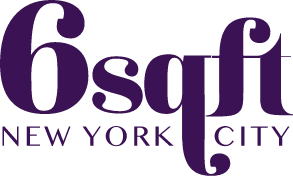 Carter Horsley
Carter HorsleyDec 23, 2011
Carter's Review
This large and handsome apartment house was erected in 1906 at 257 Central Park West on the southwest corner at 86th Street and converted to a cooperative in 1980.
The 13-story, red-brick building has 69 apartments and was designed by Mulliken and Moeller, who also designed Rossleigh Court immediately to the south on the same block. They also desgined the similar Bretton Hall Hotel on the east side of Broadway between 85th and 86th Streets and the wonderful Lucerne on the northwest corner of 79th Street and Amsterdam Avenue.
The building's relatively small entrance is located on Central Park West and has a small canopy. While the large metal marquee on the side-street leads into a suite of medical offices.
There is an excellent cross-town bus service at the corner, as well as a subway station.
Bottom Line
An elegant, red-brick pre-war building adjacent to bus stops, a subway station and Central Park.
Description
The building has a two-story, rusticated limestone base and a red-brick façade with a cornice on the next two top floors.
The building has protruding air-conditioners, inconsistent fenestration and no sidewalk landscaping.
The building, which has a concierge and doorman, overlooks the great lawn in Central Park.
Amenities
The building has a full-time doorman, a children’s playroom, a live-in superintendent, a bicycle room, and storage, but no roof deck and no fitness center.
Apartments
Apartment 6/7D is a four-bedroom duplex with a 27-foot-long entry foyer that leads to a 17-foot-long living room next to a 13-foot-long dining room. Adjacent to the enclosed 12-foot-wide windowed kitchen is a 17-foot-long family room, all on the lower floor. All the bedrooms are on the upper floor.
Apartment 7A is a four-bedroom unit with an entrance gallery that leads to a 30-foot-long living room and an enclosed 17-foot-long dining room and a 14-foot-long kitchen.
Apartment 11AB is a three-bedroom unit with a 23-foot-long entrance gallery that leads, in one direction, to a 14-foot-long, windowed dining room. There, a 24-foot-long living room is adjacent to the 20-foot-long library. In the other direction there is a 17-foot-long windowed kitchen with an island and a pantry, next to which is a laundry room and an 18-foot-long family room.
Apartment 9D is a two-bedroom unit with an 11-foot-long entry foyer that leads to a 19-foot-wide living/dining room with an open, 10-foot-wide, pass-through kitchen.
Apartment 8C is a two-bedroom unit with a 10-foot-wide entry foyer that leads to a 23-foot-long living/dining room with an enclosed and windowed 9-foot-long kitchen.
Apartment 10E is a two-bedroom unit with a 17-foot-long living room and an enclosed and windowed 10-foot-wide kitchen.
History
The building was built by Gotham Building & Construction as the Central Park View apartment house whose main entrance was on 86th Street (as a porte corchere that lead to the lobby and a central courtyard).
The building had originally 48 apartments, an automated mail delivery system and sophisticated, for its time, water-filtration system.
In 1907, the Montecello Realty Company sold the building to David H. Taylor and Charles W. Ogden. The building was sold again in 1914 and in 1918 it was taken over by the Sonn Brothers and the Peter Stuyvesant Operating company and converted to the Hotel Peter Stuyvesant with a new dining room and reception area.
In 1939, a cabaret and piano bar was added and soon the striped awnings that shielded each window were removed. In 1941, the property was sold to the Wilger Realty Corporation and by the 1950s the elevator men were gone and the cars were upgraded to automatic version. Finally, in 1957 the cabaret, “having established a poor reputation with the police", was renovated to accommodate new medical and legal office space and in 1960 the building was sold to Soltzer & Lampert.
In 1967, Simon Haberman and Walter Schultze bought the property and converted it to apartments with a medical center on the first floor and a garage in part of the cellar and an entrance on Central Park West. They called the property The Orwell House.
In 1978, the building was converted to a co-operative.

- Co-op built in 1906
- 1 apartment currently for sale ($499K)
- Located in Central Park West
- 69 total apartments 69 total apartments
- 10 recent sales ($357K to $9.1M)
- Doorman
- Pets Allowed

 6sqft delivers the latest on real estate, architecture, and design, straight from New York City.
6sqft delivers the latest on real estate, architecture, and design, straight from New York City.
